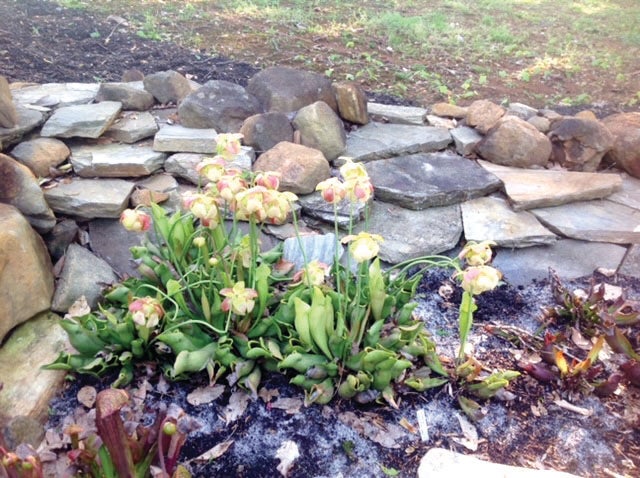Amy-Lynn Albertson column: Get boggy with it!
Published 12:00 am Saturday, April 16, 2022

- Pitcher plants in bloom
By Amy-Lynn Albertson
N.C. Cooperative Extension
The Rowan County Master Gardener Plant Sale is around the corner on May 7, and this year they have some unique, exciting plants for sale. One plant I’m really excited about is the pitcher plant. Did you know that North Carolina is home to many carnivorous plants? There are 66 species of carnivorous plants in the United States, and an astounding 36 of them live in North Carolina. Acidic soils, low nutrients and a high-water table provide excellent habitat for carnivorous plants to thrive. These conditions exist in select patches across the state, ranging from longleaf pine savannas in the coastal plain to mountain bogs in the Southern Blue Ridge. Encyclopedia Britannica defines a bog as a type of wetland ecosystem characterized by wet, spongy, poorly drained peat-rich soil. You can create a bog garden in your landscape with raised bed or excavated area lined with an impermeable layer such as a pond liner or roof liner, filled with a substrate that supports the growth of plants that constantly need wet to damp, acidic conditions to thrive. It should be situated in full sun or areas that get at least 6 hours of direct sunlight. Ideally, beds should range from 12 to 30 inches deep.
The generally recommended medium is a roughly 50:50 mix of sphagnum peat (from compressed rectangular bales) and silica sand; blasting sand is typically recommended. Local sand can also be used if it does not contain lime. Although not intuitive, creating a bog garden on a gradual slope is often preferred, where water can slowly seep out, resulting in permanently damp but aerated soil. Bog gardens are usually at their peak in the summer months, so it’s best to start them in the early spring, so the plants have time to get their roots established. Pitcher plants are ornamental from May through summer and into fall. Their large, exotic flowers (which were popular with florists in the 1960s) occur in May in various colors from yellow to red and pink, followed by the exotically colored leaves, which are modified to trap and digest insects.
Carnivorous plants do photosynthesize, but they must look elsewhere for food because they live in low-nutrient soils. Flytraps close their tiny but mighty jaws around unsuspecting insects while pitchers trap them in deep cavities filled with digestive liquid. Sundews and butterworts have sticky spots where the bugs get stuck. Bladderworts use suction traps. When aquatic prey touches their tiny hairs, a door opens to a water-filled sac, and insects get sucked inside, snapping the door shut. Surprisingly, carnivorous plants still benefit from pollination and rely on insects to transfer pollen between flowers. In the case of pitchers and flytraps, this produces some stunning results. It’s common to see bugs hovering suspiciously nearby, perhaps examining whether it’s safe to land. Carnivorous plants are selective, consuming ants and spiders and not bees, but there’s little known about how exactly they distinguish pollinator and prey. I recently listened to a podcast about carnivorous plants called “Ologies” by Allie Ward. Check it out, I laughed, and I learned a lot. Some other fun bog plants you can add are swamp iris and Joe Pye Weed.
This year, be on the lookout for an assortment of pollinator plants. We have recently started keeping a hive of bees here at the Extension Center and happily planting pollinator plants for our native bees and other pollinators. Some of the plants available are a variety of sun-loving coneflowers, bee balm, mountain mint, bronze fennel, yarrow and buttonbush.
The sale starts at 8:30 a.m. on the dot. No early shopping. The Rowan County Master Gardeners accept checks, cash, and Venmo. Many other perennials, shrubs and vines will be for sale on May 7, 8:30 a.m.-noon at the Agricultural Building at 2727 Old Concord Road in Salisbury.
Call the Extension Center for more information 704-216-8970.
Amy-Lynn Albertson is the director of the Rowan County Extension.




